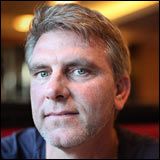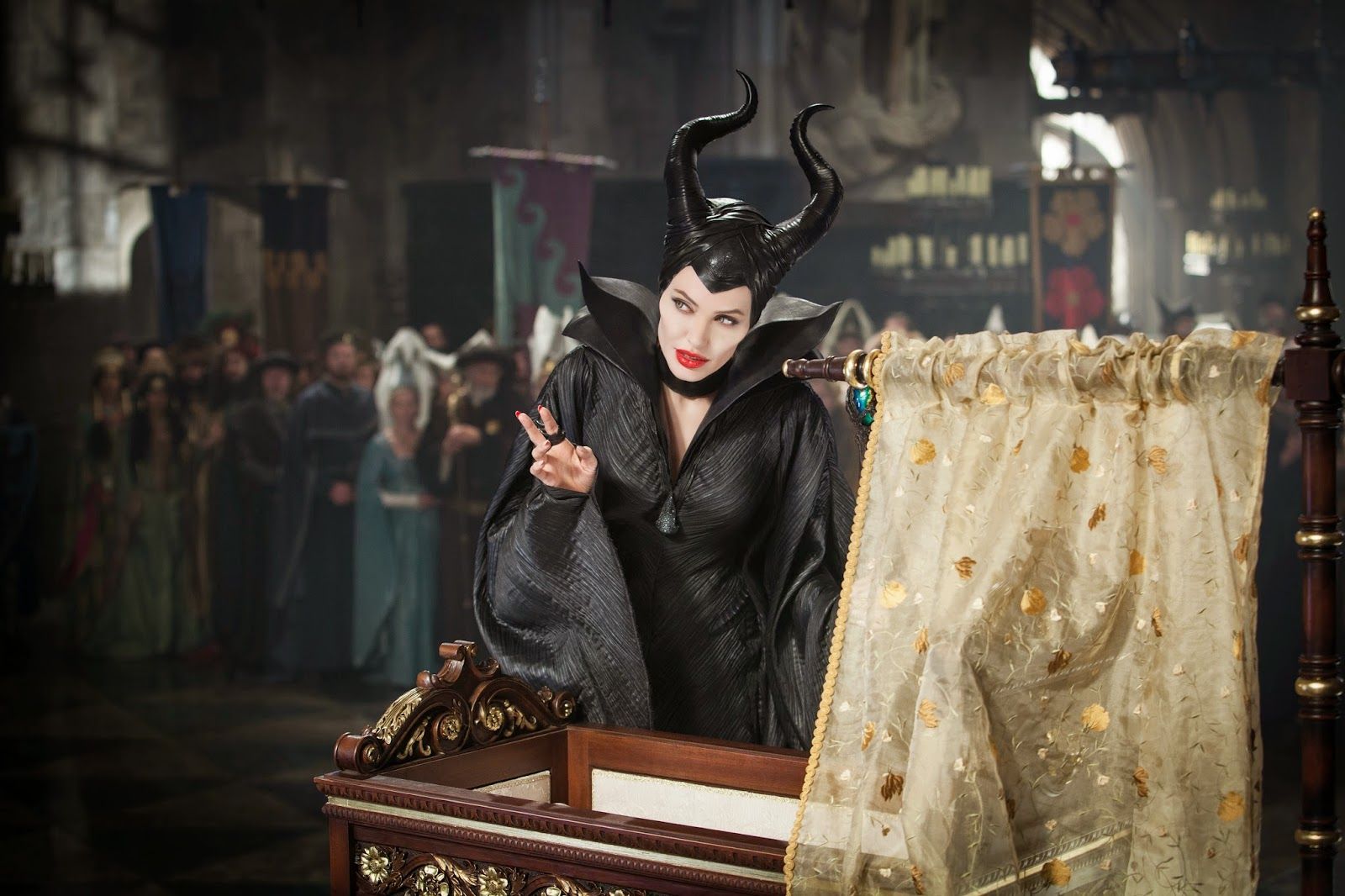Need worlds built? No problem: Robert Stromberg can deliver worlds.
As a matte painter he’s had a hand in crafting the imagined realities like Star Trek: First Contact and Pan’s Labyrinth; as a visual effects designer he’s crafted landscapes populating The Hunger Games; and as a production designer he’s fully realized the environs of Avatar, Alice in Wonderland and Oz the Great and Powerful, working with visionary filmmakers like James Cameron, Tim Burton and Sam Raimi.
And then it came time for Stromberg to rise to the next challenge: telling his own stories in the elaborate fantasy lands he brings to life. Maleficent, the previously untold origin tale of the iconic evil sorceress from Walt Disney’s 1959 animated classic Sleeping Beauty, offered Stromberg the opportunity he’d been waiting for, with no less a luminary than Angelina Jolie in the title role. In an exclusive chat with Spinoff Online, Stromberg discusses the approach and inspirations behind his reinterpretation of the not only the popular malefactor but the enchanted world she inhabits.
Spinoff Online: What was the irresistible element of this project that made you say, "Yeah, I’ve got to do this one."
Robert Stromberg: Oh, there were several, I think. First of all, we have this iconic, strong woman character – and James Cameron likes these sort of strong, female characters, and there's something really interesting about that. I'm a big fan of comic books and super heroes myself, because she kind of is a superhero in some weird way. She reminds us of a superhero, for sure. But we're able, because she's a strong female and dark, we're able to then play with a more gentle, lighter side and then see how that concoction develops. So I was very interested in playing with this sort of iconic, you could say comic book-like character in finding a different type of emotion. Not unlike Ripley or anybody else that Cameron has worked with.
Last week I got to spend some time at the Disney Animation Research Library, seeing original material from the 1959 Sleeping Beauty. What were the things that came out of your visit that really became part of your toolbox?
Oh, I love that place! Design-wise? Well, I'm a huge fan of Eyvind Earle, and I have several pieces of original art myself that I bought because I'm such a big fan. I think for the movie that we were trying to make, it was a little too stylized. We actually went there first, design-wise, and then sort of soon realized that it's a little distracting to the story that we're trying to tell. So for our film, we wanted to be a little more photorealistic and grounded in reality, but it was very important to me that you could sort of sense, or have the essence of Eyvind Earle in there anyway. So if you go through the film, you can tell by the way some of the forests look or some of the mountain shapes or things like the castle that his work lives there. It's just a bit more hidden.
Outside of the original film, what other influences weighed heavily in your mind as you conceived the visual look of the film – from any sort of source material?
Oh God. My father bought me a book, The Art of Disney – It has Mickey with the paintbrush on the cover – and I was probably five or six years old when he gave it to me. And I literally drew every picture in that book probably ten times because I was so fascinated, the mood that the artists got from these simple watercolors and pencil drawings, I just thought it was fantastic. I was also very much influenced by the early drawing from King Kong – the Willis O'Brien 1933 version by a guy by the name of Marcel Delgado who did these beautiful pencil drawings. And the way that the roots, by both Disney and Marcel Delgado, the way that he drew trees with the roots – they all had this sort of personality in every tree. That was fascinating for me, how to capture that. And so I learned the style of Disney – Snow White, Bambi, Pinocchio – very early on, and have always been heavily influenced by those artists because I think they're just fantastic. And later on – my dad is a huge comic book collector. I'm talking about early Disney like Scrooge McDuck. I read every Scrooge McDuck [comic] there ever was. I was just fascinated by those stories and the adventures they would go on and always end up in the sort of room of piles of money that he'd dive in. All of the early Disney comics. I read all of those. And then I got into the Heavy Metal magazine style and the art and some beautiful drawings that were going on at the time. And then the Marvel stuff entered in more as a teenager. So beautiful drawings, I was always fascinated by comic characters. I approached Maleficent with the idea that we had this sort of iconic, comic-book-like character and how much fun we could have with that.
In what ways did the previous positions you've had in filmmaking prepare you for what you did with this one, and in what ways were you completely in uncharted territory, things you never expected you had to do?
I felt completely prepared. Probably some people would be usually intimidated by the scale of a movie like that. But I had done several, so entering into the movie – the world part of it, the how to make a world, how to realize a world – I wasn't worried about at all. The question in the room was "Can this guy talk to actors? Can this guy create scenes that have emotional impact?" And people would ask me, but I knew inside, because I had always wanted to be a director – if you're an emotional person yourself, and you've paid attention to human behavior and human emotion, you have a really good understanding of why a person will react a certain way when they say something and how they, in context of a scene or a movie is appropriate. It's really a rhythm, and I think the art in the film is a rhythm. Composition, how you steer the eye into the subject you want to see. And it's amazing to me. You become this sort of emotional interpreter in what people are saying. And so, no, I looked at that sort of grey area of director-actor, interplay as the last bit of rhythmic art that I hadn't discovered yet. And it was more exciting than daunting.
Let's talk specifically about that collaboration with Angelina on the main character. Tell me what you saw her responding to in Maleficent, and how the two of you were able to really figure out this take, redefining her.
We knew it was a retelling of a character that everybody already knows. But in the Disney classic cartoon, it's really kind of one-dimensional. You kind of know she's evil, and that's it. So what was exciting to both Angelina and myself was to make the character three-dimensional and be able to see that character in other angles, and yet not disrupt something that was already great in the icon that we all know. So it was very important to respect things that made that character great, but then to give the fans something else which is answered questions that they might want to know: Why was she evil? Where did she come from? Those sorts of things. And then the christening scene in this film, Angelina and I intentionally decided to make it verbatim, almost word-for-word from the classic film, because when you're involved with this backstory and all this new information by the time you get to that moment which is sort of the center of the film, you're like, "Yeah, that's the character. And now I know why she's like that."


